DROPS Bomull-Lin
Rustic elegance in cotton and linen
from:
2.50£
2.59€
Content: 53% Cotton, 47% Linen
Yarn Group:
C (16 - 19 stitches)
/ 10 ply / aran / worsted
Weight/length: 50 g = approx 85 m
Recommended needle size: 5 mm
Knitting tension: 10 x 10 cm = 17 sts x 22 rows
Care: Machine wash on gentle cycle 40°C / Dry Flat
Made in: EU
Raw material origin: Cotton from Pakistan, linen from Poland
This yarn has an Oeko-Tex® certification (certificate number 09.HBG.68250), Standard 100, Class I from the Hohenstein Institute. This means that is has been tested for harmful substances and is considered safe in human-ecological terms. Class I is the highest level, and it means the yarn is suitable for baby articles (ages 0-3).
Natural and rustic, DROPS Bomull-Lin is spun from multiple strands of linen and cotton to provide a strong and durable knitting yarn that combines the brittle structure of the linen with the softness of the cotton.
With a palette inspired by the beautiful colours of the linen plant after the harvest, garments made in DROPS Bomull-Lin breath well, have an exclusive linen feel and a delicate shine - which makes this yarn a great choice for light summer clothing.
Read more about our products' sustainability here
Please be aware that the colours shown may vary from screen to screen in the same way that shades may vary slightly from dye lot to dye lot.
How do I care for this yarn?

Machine wash on gentle cycle 40°C / Dry Flat
Here are some guidelines to wash your cotton garment, but please note that cotton has the tendency to shrink in the wash, so make sure you measure the garment before washing, in order to shape it correctly after the wash:
- Machine wash - separately - using a gentle cycle program at 40ºC and wool detergent without enzymes or optical brighteners.
- NEVER leave the garment to soak/wet in the washing machine for a long period of time.
- To dry the garment, shape it and lay it flat - do not hang - ideally on a warm bathroom floor or on top of a drying rack in a room with good air circulation. Never dry the garment in direct sunlight.
- Don’t tumble dry.
- Unevenness in the garment will even out after washing or steam ironing lightly.
- Never iron the garment directly. Use always a damp cloth between your steaming iron or regular iron and the garment.
Note: If you are washing a project made with this yarn combined with another, the general guideline is to follow the washing instructions for the most delicate of the yarns you are working with.
Do you have a question about this yarn?
See a list of frequently asked questions (FAQ) about our yarns.
1) What type of fibers make the DROPS yarns?
Yarn can be made from a large number of natural and synthetic fibers. DROPS carries mainly yarns made from wool, cotton, alpaca, linen, mohair and silk. Each fiber type has its own qualities, and they are often mixed to take advantage of the best properties of each one. Coarse yarn has the advantage of being stronger and more durable, and finer fibers offer more softness and comfort. Here a bit about the main fibers we carry:
Alpaca:
Alpaca fleece is the natural fiber harvested from an alpaca, and it is similar in structure to sheep wool fiber. Its softness comes from the small diameter of the fiber, similar to merino wool. It is a soft, durable, luxurious and silky natural fiber. Yarn made from alpaca fibers does not felt or pill easily, and it can be light or heavy in weight, depending on how it is spun. While similar to sheep’s wool, it is warmer, not prickly, and has no lanolin, which makes it hypoallergenic. Alpacas come in 22 natural colors, with more than 300 shades from a true-blue black through browns-black, browns, white, silver and rose-greys.
Mohair:
This fiber comes from the Angora goats, and it's considered a luxury fiber. Mohair yarn is warm as wool, but much lighter in weight; it is durable, dyes well and does not felt easily. Mohair fibers have also a distinctive luster created by the way they reflect light. Despite being a hard fiber, mohair is usually spun into a very fluffy yarn, resulting in airy and lustrous garments.
Wool:
The wool fibers come from the skin of sheep and are relatively coarse fibers. Two striking characteristics of wool are its susceptibility to heat and its felting property, which is caused by the scales on the surface. Depending upon the breed of sheep, the appearance of the wool varies.
Wool from Merino sheep is considered the finest type of wool, having as characteristics that is finely crimped and soft. All the Merino wool in the DROPS yarns has its origins in South America, coming from sheep that have not been subject to Mulesing.
Pure new wool is wool made directly from animal fleece, and not recycled from existing wool garments.
Machine washable wool is wool treated chemically to minimize the outer fuzzy layer of the fibers, and be therefore fitable for machine wash (see Superwash).
Silk:
The silk fiber is a fine continuous fiber produced from the cocoon of a moth caterpillar known as the silkworm. While silkworm is cultivated, the wild or tussah silk is obtained from uncultivated silkworm cocoons. Silk fiber is one of the strongest natural fibers and makes a wonderful knitting yarn. It blends really well with other fibers, especially wool. Silk also dyes beautifully with natural dyes.
Vegetable fibers:
There are several varieties of vegetable fibers, found in the cell walls of plants or vegetables. Of all the varieties, two are recognized as major knitted or textile fibers. They are cotton and linen.
Cotton is the fiber surrounding the seeds in a cotton pod, and it is almost pure cellulose. Cotton is usually white in color but there are green and brown varieties as well. The cotton fiber is most often spun into yarn or thread and used to make a soft, breathable textile that is good for summer clothing and accessories, making a weaker yarn than silk or linen but stronger than wool.
Mercerized cotton is cotton that has been through a mercerization treatment. This treatment gives cotton fabrics and threads a lustrous yarn that is more lustrous than conventional cotton. It is also stronger, takes dye a little more readily, makes the yarn more resistant to mildew and reduces lint. It also may not shrink or lose its shape as much as "regular" cotton.
Linen is a fiber derived from the stalk of the flax plant that is durable and stronger than any other fiber. The linen fiber is relatively soft, straight and lustrous and becomes more beautiful with age. Linen is more comfortable to wear in hot temperatures than cotton, due to the fact that it absorbs moisture better and dries more quickly.
Other materials used in our yarns include synthetic fibers such as acrylic, viscose, polyamide (nylon) and polyester. These fibers are used mostly to give strength to a yarn (like our sock yarn, DROPS Fabel) or a special kind of structure (like our blown yarn, DROPS Air).
The polyamide fibre, commonly known as nylon, is very strong, durable, lightweight, easy to care for (can be machine washed and dried), and elastic, which makes it perfect for blending with other fibres to produce hard-wearing yarns like sock yarn.
Compared to polyester, polyamide is softer and more flexible, but it also absorbs more water and dries slower.
3) What type of information can I find on the DROPS yarn labels?
All DROPS yarn labels include information about fiber content (wool, cotton, etc.), weight in grams and ounces, length in meters and yards, washing instructions and symbols (explained here), color number, dye lot number and yarn group information.
4) What are the DROPS yarn groups?
All DROPS yarns are classified into 6 different thickness groups (A to F). Yarns in a same group have similar knitting tension/gauge, and can therefore be interchanged in patterns; however the length may be different, so when substituting always calculate the amount of meters/yards needed for the pattern to know the amount of yarn you need to get.
5) Can I use a different yarn than the one mentioned in the pattern?
Yes, as long as the yarn can be worked in the same knitting tension/gauge. Always swatch to make sure you get the same number of stitches in width and rows in height as given in the pattern.
Remember that different yarns with different textures, will give the garment different looks. The yardage/length may also be different, so when substituting always calculate the number of yards needed, in order to know the amount of yarn you need.
Read more about how to calculate the amount of an alternative yarn - and how to replace 1 thread of a yarn with 2 or more of another, here.
6) What does it mean when a yarn is “Superwash”?
A superwash wool is a special wool product that has been treated or processed in a way that allows it to be machine washable. Many people are afraid to work with wool because it is so easy to shrink (though some shrink wool on purpose) and superwash wool can allow them to work with great fibers without worry. (Read more here).
7) What does “Oeko-Tex® certified” means?
The Oeko-Tex® Standard 100 was introduced at the beginning of the 1990s as a response to the needs of the general public for textiles which posed no risk to health. The Oeko-Tex® Standard 100 is a globally uniform testing and certification system for textile raw materials, intermediate and end products at all stages of production. The test for harmful substances comprise substances which are prohibited or regulated by law, chemicals which are known to be harmful to health, and parameters which are included as a precautionary measure to safeguard health.
For more info go to www.oeko-tex.com
10) How accurate are the colours on the shade cards online?
When obtaining images for the shade card, we do our best to achieve the highest level of color accuracy. Unfortunately, we cannot guarantee how images will appear on your computer screen. Every monitor displays color differently, some colors might look darker than they really are, and some colors might be more saturated on some screens. If you experience that many of the yarn colors looks different on your screen than the actual color of the skeins, you can adjust the setting on your monitor.
11) What is a micron? What does super fine / extra fine mean?
The fineness of yarn fibers is measured in microns (thousands of millimeters). Super fine alpaca wool is 26-28 microns. Fine merino wool is less than 21.5 microns and extra fine merino is under 19.5 microns. The less microns the softer and more delicate a quality can be, the more microns the more hard wear the quality will be.
The reason why the microns in a yarn’s fibers are important is that the yarn will eventually become something else, and how delicate or coarse a yarn is will determine in part what we use it for. That’s why we recommend the softest yarns (like DROPS Baby Merino) for baby clothing, or why we choose to use a more hard wear yarn like DROPS Snow, for a seating pad or slipper.
12) Why are the colours in my skeins of print yarn different?
The reason why two skeins of a same print yarn look different can be 1) that both skeins are part of different dye lots; 2) that the skeins have been dyed using a technique called "magic print" (the one used for example in DROPS Delight), which provides unique patterns and smooth colour transitions to each skein, meaning also that within one dye lot, lighter or darker varieties might appear. This is no fault or defect, but part of the yarn's character.
13) My store doesn’t have the colour I want, what can I do?
If your DROPS store doesn’t have the yarn colour you want, try contacting a DROPS Super Store (the ones with the golden badges) - they will make sure to get a hold of the colour even if they don’t have it in stock themselves. See a list of all DROPS stores here.
14) Where can I find a specific dye lot of a colour?
Always try contacting your DROPS store first. If they do not have the dye lot you want we recommend you to ask other knitters and crocheters in the DROPS Workshop in Facebook or Ravelry, which may have the dye lot in their stash and might be willing to part from it.
Yarn sheds because there's not enough twist to hold all of the fibers together. All yarns have excess fibers (from production) that might come off as lint or shedding, in varied degrees that depend on how the yarn is spun. Brushed yarns ("hairier" yarns) like DROPS Melody, have more of these loose fibers than other yarns, and therefore shed more. Shedding also depends on what is worn under or over the garment, and whether this pulls at the yarn fibers. It’s therefore not possible to guarantee that there will be no shedding.
Below are some tips on how to get the best result when working with hairier yarns:
- When the garment is finished (before you wash it) shake it vigorously so the looser hairs come off. NOTE: do NOT use a lint roller, brush or any method that pulls at the yarn.
- Place the garment in a plastic bag and put it in your freezer - the temperature will cause the fibers to become less attached to each other, and excess fibers will come off easier. Leave in the freezer for a few hours before taking it out and shaking it again.
- Wash the garment according to the instructions on the yarn label. Garments worked with hairier yarns usually need to be shaken once dry after washing, so that the hairs rise and any excess fibers can come off.
Pilling is a natural process that happens to even the most exclusive of fibers. It's a natural sign of wear and tear that is hard to avoid, and that is most visible in high friction areas of your garment like a sweater's arms and cuffs.
You can make your garment look as new by removing the pilling, using a fabric comb or a pill/lint remover.
How can I replace this yarn?
If you are looking to replace this yarn with another DROPS yarn, you can use another yarn within the same yarn group, or try our yarn converter!
Other yarns in Yarn Group C
Read more about replacing yarn.Have a problem with the DROPS yarn you purchased?
When you purchase yarn from the shade cards or patterns on our site, you are not buying directly from DROPS but from one of the hundreds of DROPS stores around the world. It is therefore important that you take contact with the DROPS store where you bought the yarn, and that you save the labels of all the skeins you purchased (they are your warranty).
The DROPS store you contact will assist you and escalate the claim if necessary. Find a list of DROPS stores here.
Comments / Questions (116)
![]() Lua wrote:
Lua wrote:
Hi! What is the recommended hook size for Bomull-Lin for crocheting? And what is the gauge?
11.10.2025 - 13:46DROPS Design answered:
Dear Lua, the recommended hook size and gauge will depend on the pattern worked. Most of our crochet patterns with Bomull-Lin use hook size: 3.5mm - 4.5mm. The hook size is usually smaller than the recommended needle size. And the recommended gauge will usually be indicated in the pattern itself and it will depend on the stitch-pattern that we are working and the object that we are making (dolls usually require a tighter gauge, while nets will have a loose gauge). Happy crochetting!
12.10.2025 kl. 11:36
![]() Bettina wrote:
Bettina wrote:
Habe 11 Knäuel dieses Garns verstrickt und bin mit dem Ergebnis sehr zufrieden. Allerdings hatte ich leider in fast jedem Knäuel mindestens ein Knötchen - teilweise sogar zwei Knötchen auf einer Länge von nicht Mal 20cm. Das kenne ich von anderen Drops Garnen zum Glück nicht. Woran liegt das? Habe ich „B-Ware“ erwischt?
20.08.2025 - 20:07DROPS Design answered:
Liebe Bettina, bei Reklamationen wenden Sie sich bitte direkt an das Geschäft, in dem Sie Ihre Wolle gekauft haben. Vielen Dank für Ihr Verständnis.
22.08.2025 kl. 17:20
![]() Kyleigh wrote:
Kyleigh wrote:
I know I am just one of a bazillion customers, but I was wondering if it could be possible to make this yarn in a smaller gauge??? Id love a yarn like this with a higher linen content that was spun a bit lighter weight. I know other yarns exist, but i like Drops. :)
06.07.2025 - 13:29DROPS Design answered:
Dear Kyleigh, we have 2 DROPS linen yarns: DROPS Bomull-Lin is a thicker yarn, with almost 50/50 cotton/linen content, while DROPS Belle is lighter, but with less linen content. At the moment we are not aware of a new linen yarn being made. Happy knitting!
06.07.2025 kl. 19:04
![]() Catrin wrote:
Catrin wrote:
Kan man tvätta garnet i 60 grader om man stickat en disktrasa av det?
22.01.2025 - 09:17DROPS Design answered:
Hei Catrin. Anbefaler deg å følge vaskeanvisningen til garnet. Evnt teste ut / vaske en prøvelapp først. mvh DROPS Design
27.01.2025 kl. 07:47
![]() Karen wrote:
Karen wrote:
Moin, beim Waschen fusselt das Garn ziemlich. Gibt sich das nach ein paar Wäsche? Danke und Gruß Karen
24.08.2024 - 11:11DROPS Design answered:
Liebe Karen, beachten Sie, ein Waschmittel nicht zu scharf zu verwenden, um die Fasern nicht zu zerstören, hier lesen Sie mehr. Viel Spaß beim Stricken!
28.08.2024 kl. 09:07
![]() Monika wrote:
Monika wrote:
Hi! :) How many meters of this yarn are needed for a 10x10 cm sample?
28.06.2024 - 20:25DROPS Design answered:
Dear Monika, this will depends on your own tension or on the tension required, the best is to make first a swatch then measure the yarn used. Happy knitting!
01.07.2024 kl. 13:57
![]() Daniela wrote:
Daniela wrote:
Buongiorno,è possibile se è prevista una promozione in Italia per questo filato? Grazie
12.05.2023 - 17:47DROPS Design answered:
Buonasera Daniela, non ci è possibile conoscere in anticipo le promozioni per i filati DROPS, in ogni caso se clicca su "ordinare" nella cartella colori può vedere i prezzi dei vari rivenditori, e magari individuare delle offerte. Buon lavoro!
18.05.2023 kl. 21:36
![]() Ute wrote:
Ute wrote:
Schönen guten Tag , würden sie auch nach Italien liefern ?
21.07.2022 - 17:42DROPS Design answered:
Liebe Ute, Hier finden Sie Geschäfte, die nach Italien verkaufen: https://www.garnstudio.com/findastore.php?id=4&cid=9
24.07.2022 kl. 19:31
![]() Ellinor Jonasson wrote:
Ellinor Jonasson wrote:
Jag har köpt Drops garn på nätet. Kommer inte ihåg varifrån. Behöver komplettera 1 nystan Bomull-Lin färg 03 Deylot 0420 och 1 nystan delight print färg 05 och dyelot 945 hjälp hur/ var kan jag beställa detta?
12.07.2022 - 14:11DROPS Design answered:
Hej Ellinor. Vi har dessvärre inte översikt på vilka partier våra återförsäljare har på lager så du måste själv ta kontakt med återförsäljarna för att se om någon av de har det på lager. Mvh DROPS Design
13.07.2022 kl. 14:37
![]() Rosalyn wrote:
Rosalyn wrote:
I want to make Hat DROPS 209-8 how many skeins of Bomull-Lin would i need..ans what is the yardage I would need? Thank you.
08.07.2022 - 23:40DROPS Design answered:
Dear Rosalyn, you need 3 balls (150gr in total) of Bomull-Lin. Since each ball has 85m, you need 255m of yarn. Happy crocheting!
09.07.2022 kl. 18:26
![]() Birgit Gass wrote:
Birgit Gass wrote:
Jeg vil starte på en bluse fra Susanne-Gustafsson.dk Der står, jeg skal bl.a. skal bruge Drops Bomull/Linn i hørfarve, men jeg kan ikke finde den på bestillingslisten
01.07.2022 - 10:15DROPS Design answered:
Hei Birgit. Anbefaler deg å kontakte Susanne-Gustafsson.dk for å få vite hvilken fargenr det er brukt til den blusen du skal strikke, slik at du får den riktige fargen. mvh DROPS Design
04.07.2022 kl. 09:42
![]() Y Jacobs wrote:
Y Jacobs wrote:
Ik heb het vorig jaar gekocht om een trui te haken maar ik kan nergens de patronen voor dit garen vinden voor een trui?
01.07.2022 - 00:17DROPS Design answered:
Dag Y Jacobs,
Geen idee welk patroon je had gevonden, maar misschien zit hij hier tussen?
03.07.2022 kl. 19:40
![]() Patty Walk wrote:
Patty Walk wrote:
How can I order some of the Bomull Lin beige yarn? I'm not able to pull up the order category.
28.05.2022 - 16:52DROPS Design answered:
Dear Patty, if you press order, you can find a list of stores shipping this yarn to your country. You can also press "find a store!" and select your country to see all our stores shipping to your country; but maybe some of them won't have Bomull Lin. You need to check with each store if they have your colour available, we don't have any information regarding stock.
29.05.2022 kl. 22:07
![]() Mascha wrote:
Mascha wrote:
Die Farbe Graublau (20) sollte besser Graugrau heißen - es ist ein wunderbares Grau ohne jedes Blau. :-/ Aber es strickt sich gut und fühlt sich angenehm weich an. Ich verwende Nadeln Nr. 3,5 und bekomme ein einigermaßen dichtes Gestrick. Meines Erachtens sollte das Garn in die Garngruppe A oder B eingeordnet werden.
20.05.2022 - 14:08
![]() Mascha wrote:
Mascha wrote:
Mir erscheint es sehr kompliziert, dass völlig verschiedene Farben gleich heißen. "Graublau" z. B. sieht bei Alaska, Merino Extra Fine und Bomull-Lin ganz unterschiedlich aus. Könnte das nicht etwas vergleichbarer gemacht werden?
06.05.2022 - 23:56DROPS Design answered:
Liebe Mascha, wenn Sie Hilfe brauchen, Ihre Farben zu wählen, können Sie sich gerne an Ihrem DROPS Laden wenden, dort wird man auch telefonisch oder per E-Mail gerne weiterhelfen. Viel Spaß beim stricken!
09.05.2022 kl. 09:06
![]() Mascha wrote:
Mascha wrote:
Danke für die schnelle Antwort (auch wenn sie mir nicht weiterhilft). Noch eine Frage: Ist \"Graublau\" (Farbe 20) tatsächlich blau? Auf dem Bildschirm kann ich das nicht erkennen.
04.05.2022 - 21:23DROPS Design answered:
Liebe Mascha, Graublau ist mehr grau aber mit etwas blau - Ihr DROPS Laden kann Ihnen damit besser helfen, auch telefonisch oder per E-Mail, die besten passenden Farben zu wählen. Viel Spaß beim stricken!
05.05.2022 kl. 09:25
![]() Mascha wrote:
Mascha wrote:
Moin! Erhält man mit diesem Garn und 5er-Nadeln ein dichtes Gestrick, oder wird es eher locker, so dass der Wind durchpfeifen kann?
02.05.2022 - 21:17DROPS Design answered:
Liebe Mascha, es hängt von jeder eigenen Maschenprobe ab - hier finden Sie alle unsere gestrickte Anleitungen mit Bomull-Lin. Gerne wird Ihnen Ihr DROPS Laden noch weiter - auch telefonisch oder per E-Mail- helfen. Viel Spaß beim stricken!
03.05.2022 kl. 11:04
![]() Lorraine Bruce wrote:
Lorraine Bruce wrote:
I am confused with the instructions for Drops 60-7. This pattern says Bomull-Lin should be knitted on 4mm needles at a gauge of 21 sts. However in the instructions for the yarn on this page it says the yarn should be knitted on 5mm needles at a gauge of 16-17 sts. There is a big difference in the finished fabric. Which is correct?
27.02.2022 - 02:04DROPS Design answered:
Dear Lorraine, the most important thing is not the needle size, but rather the gauge. The texture of this jacket is quite tight, to keep its shape. So it needs to be worked more tightly, with a higher than usual gauge. That is why it's different from the one stated in general for the yarn. In any case, when in doubt, you should follow the gauge indicated in the pattern always. Happy knitting!
27.02.2022 kl. 16:23
![]() Sissel Merete Horn wrote:
Sissel Merete Horn wrote:
Får ikke bestilt! Når jeg trykker på det aktuelle garnet kommer det bare bilde av det og ikke mulig å trykke antall og legge i handlekurven!
13.02.2022 - 10:19DROPS Design answered:
Hei Sissel. Da er det mulig at den nettbutikken du bestiller fra ikke har den aktuelle fargen. Prøv en annen nettbutikk og se om det da fungerer og bestille. mvh DROPS Design
14.02.2022 kl. 07:16
![]() Karen_2006 wrote:
Karen_2006 wrote:
Ich habe mir einen Pulli mit Bomull Lin gestrickt und im Wollwaschgang bei 30 ° gewaschen. Nun ist er 2 Nummern kleiner und ich kann ihn direkt in die Tonne treten. Sehr ärgerlich um Geld und die ganze Arbeit.
31.01.2022 - 17:30DROPS Design answered:
Liebe Karen, beachten Sie, Schleudergang muss auch als Feinwäsche/Schonwaschgang sein, hier lesen Sie noch weitere Tipps.
01.02.2022 kl. 15:07
![]() Outi Muranen wrote:
Outi Muranen wrote:
Paljonkohan tarvitsen Drops Bomull-Lin lankaa liiviin, jossa kaulus. Koko M. Etukappaleen pituus 57 cm ja takakappaleen pituus 62 cm. Kappaleiden helman leveys 52-54cm. Sileää neuletta, ehkä helmassa resori
30.01.2022 - 22:07
![]() Michaëlle wrote:
Michaëlle wrote:
Bonjour. Je vais tricoter avec le bomull-lin dont l'échantillon est fait. Mais sachant que c'est un melabge de fibres végétales, dois-je le bloquer ou puis-je déjà le mesurer tel quel ? Merci
08.11.2021 - 13:41DROPS Design answered:
Bonjour Michaelle, je vous recommande toujours bloquer un echantillon avant de commencer l'ouvrage. Bon tricot!
08.11.2021 kl. 13:45
![]() Bellmaus wrote:
Bellmaus wrote:
Guten Tag, würden Sie dieses Garn auch für ein Patentmuster empfehlen? Vielen Dank!
08.10.2021 - 19:54DROPS Design answered:
Liebe Bellmaus, wahrscheinlich, am besten stricken Sie immer eine Mascheprobe zuerst, so können Sie die gewüsnchte Textur testen/prüfen. Viel Spaß beim stricken!
12.10.2021 kl. 09:18
![]() Drops Bomull-lin wrote:
Drops Bomull-lin wrote:
Finns det färgprover på garnet?
12.09.2021 - 17:31DROPS Design answered:
Hei. Nei, vi har ingen fargeprøve vi sender ut. Ta kontakt med din nærmeste butikk og hør om de har dette garnet inne og den fargen du ønsker å se. mvh DROPS design
13.09.2021 kl. 09:32






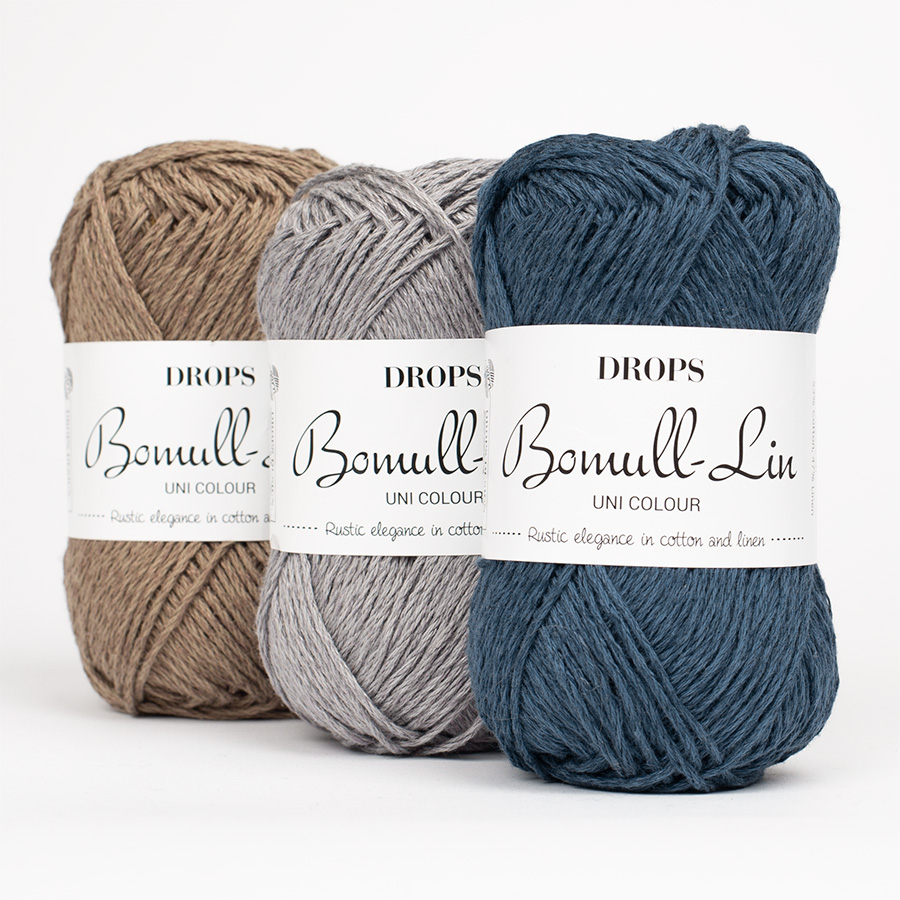
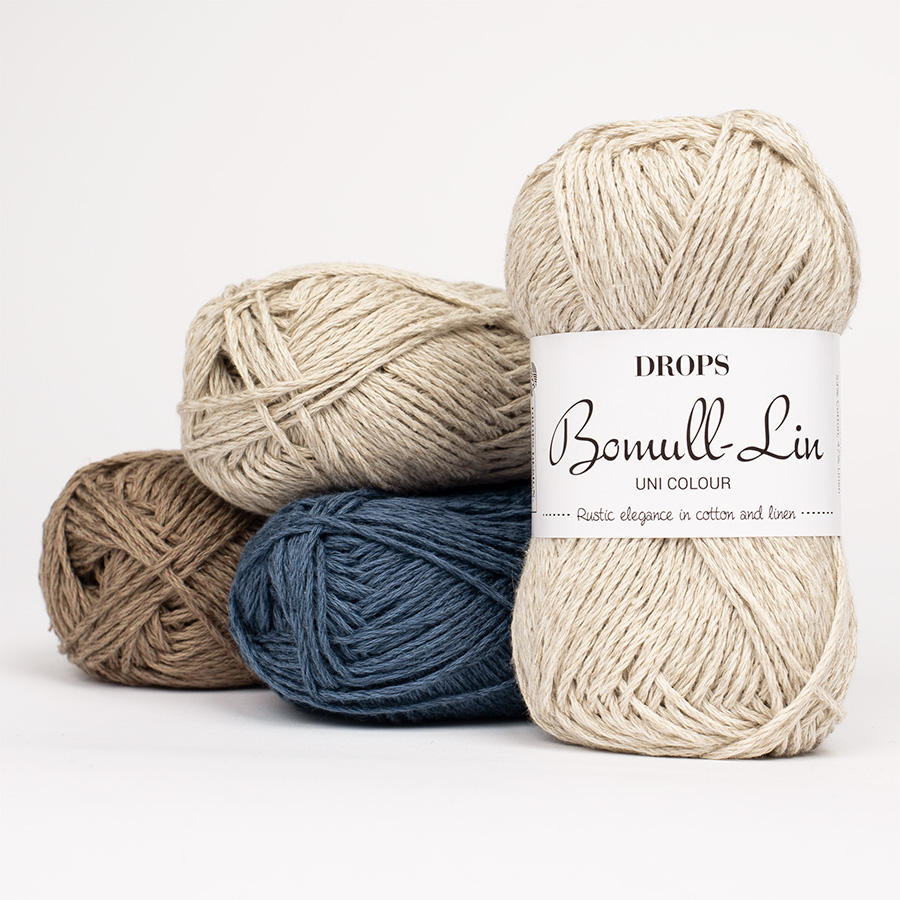
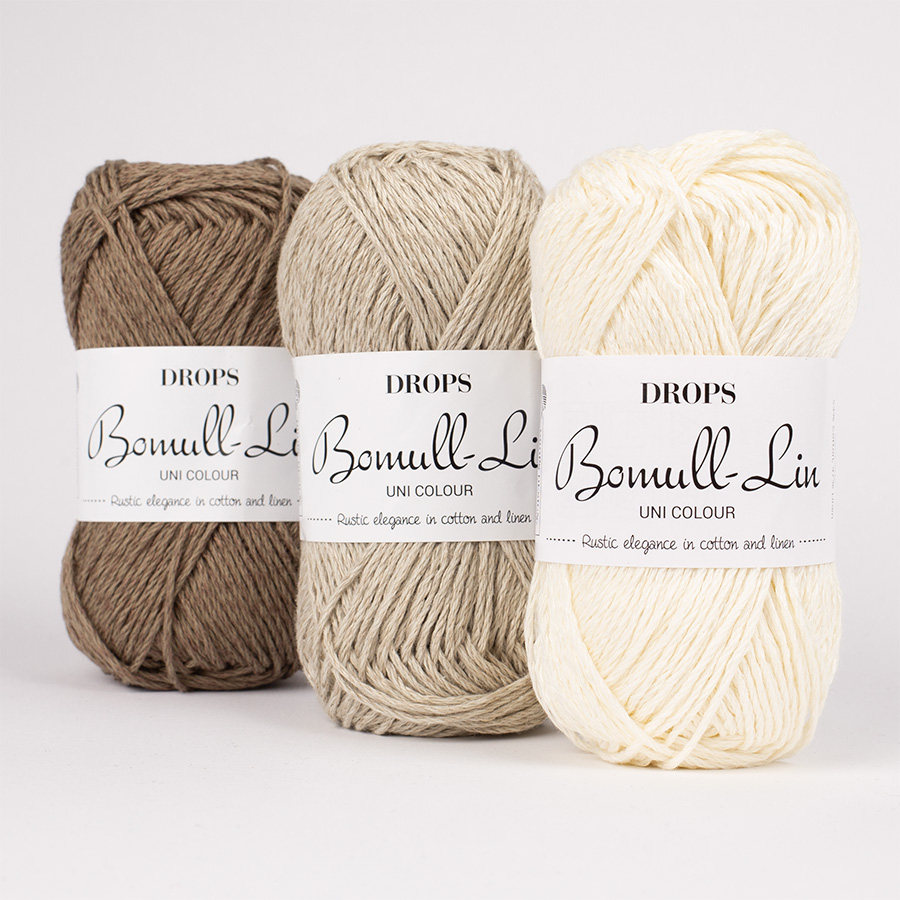
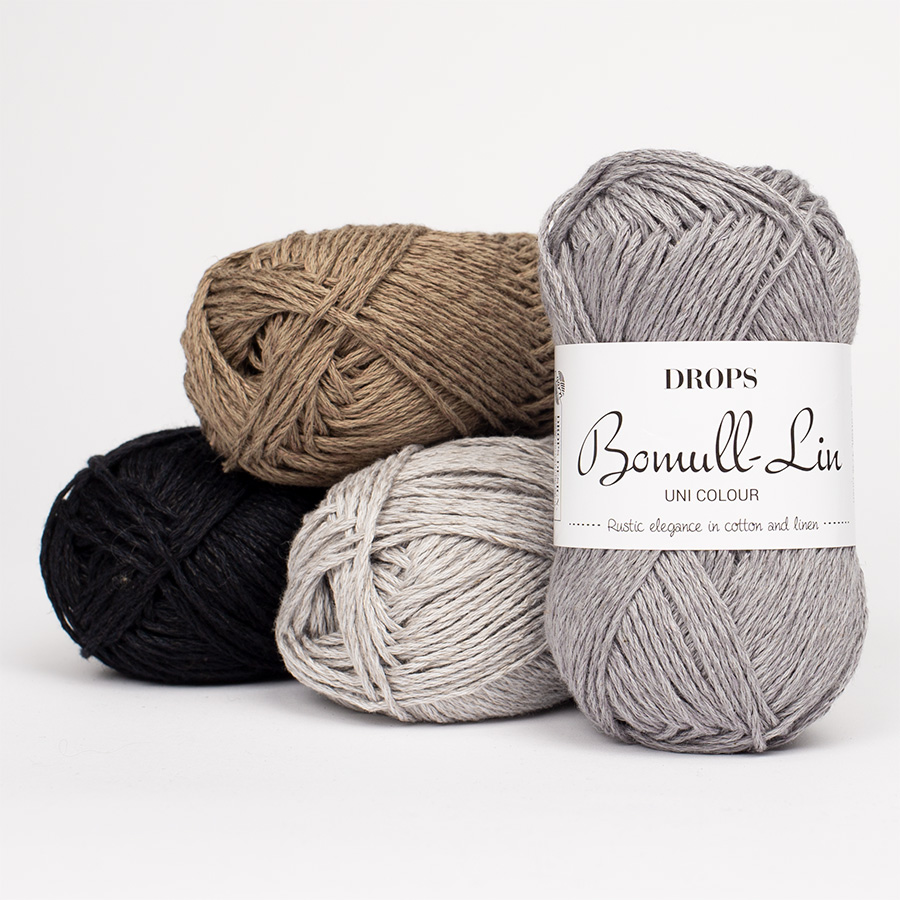

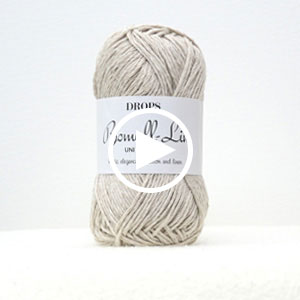










































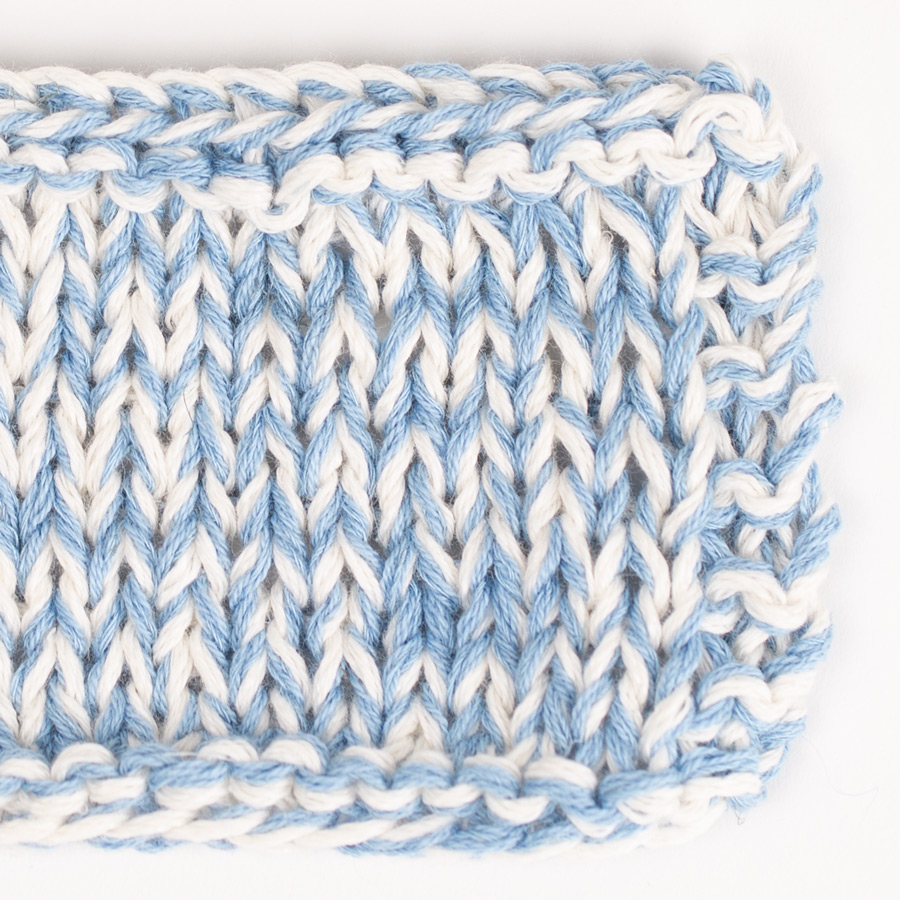
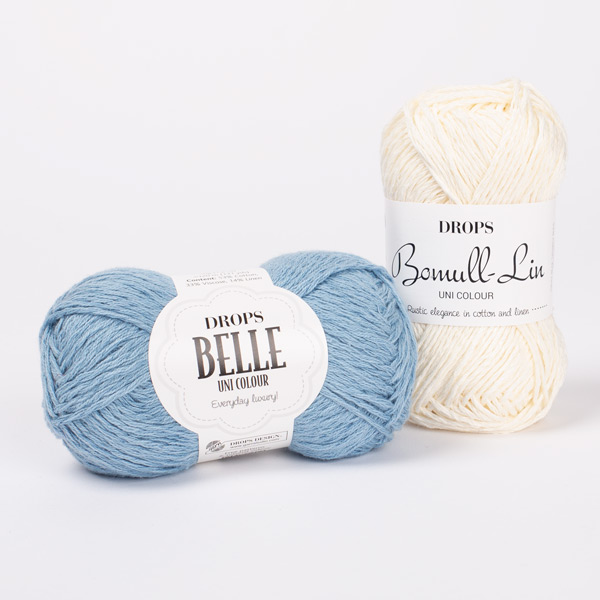
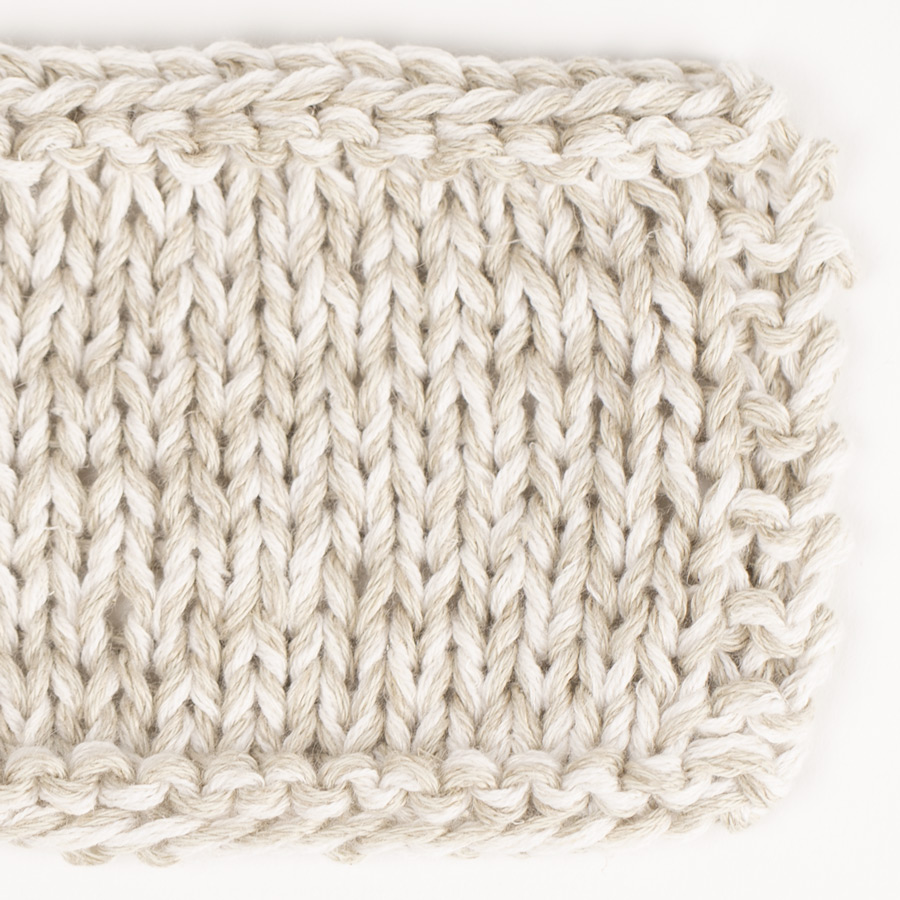


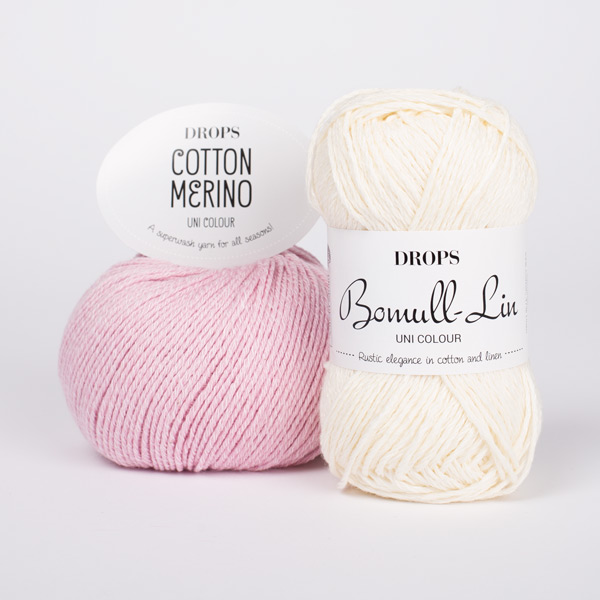
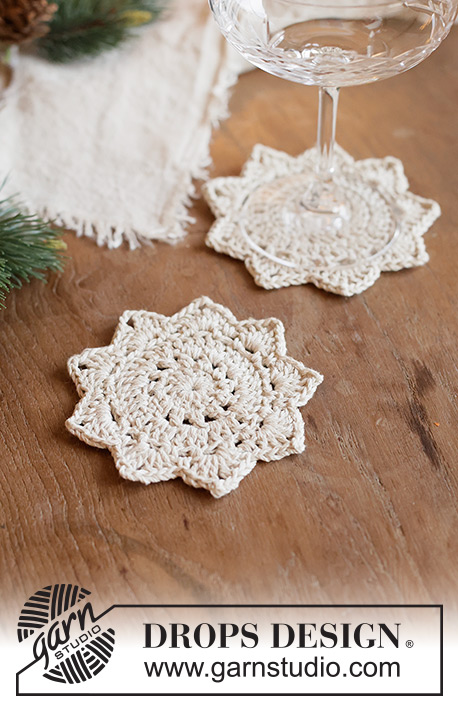







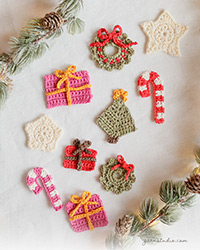
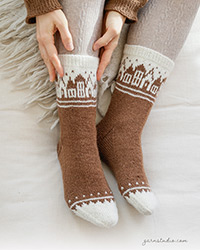

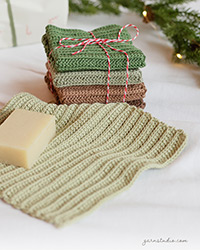
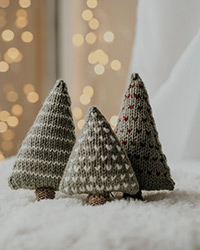
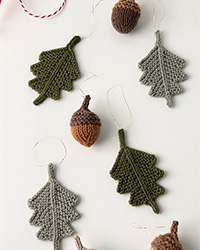
Bonjour, ce fil est vraiment très agréable à tricoter, mais est-il prévu de créer d'autres couleurs : bleu ciel, rose blush, vert mousse, etc... Les vêtements en lin seul ou mélangé arborent souvent de très belles couleurs, pourquoi pas le fil "lin coton" ?
12.06.2022 - 17:23